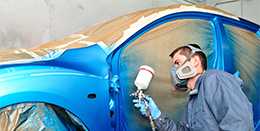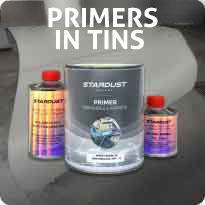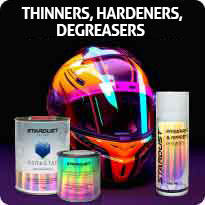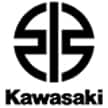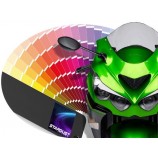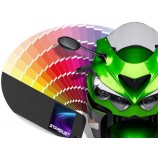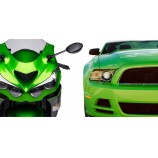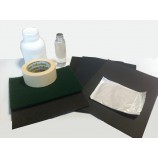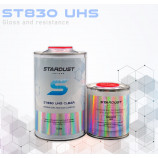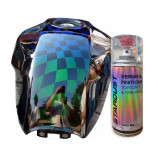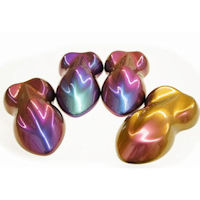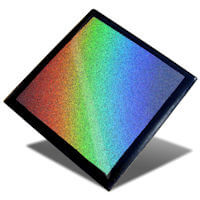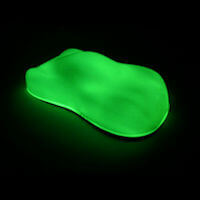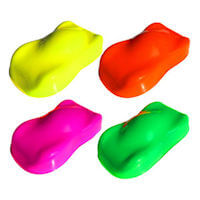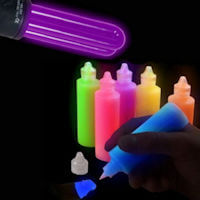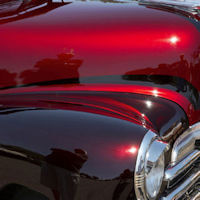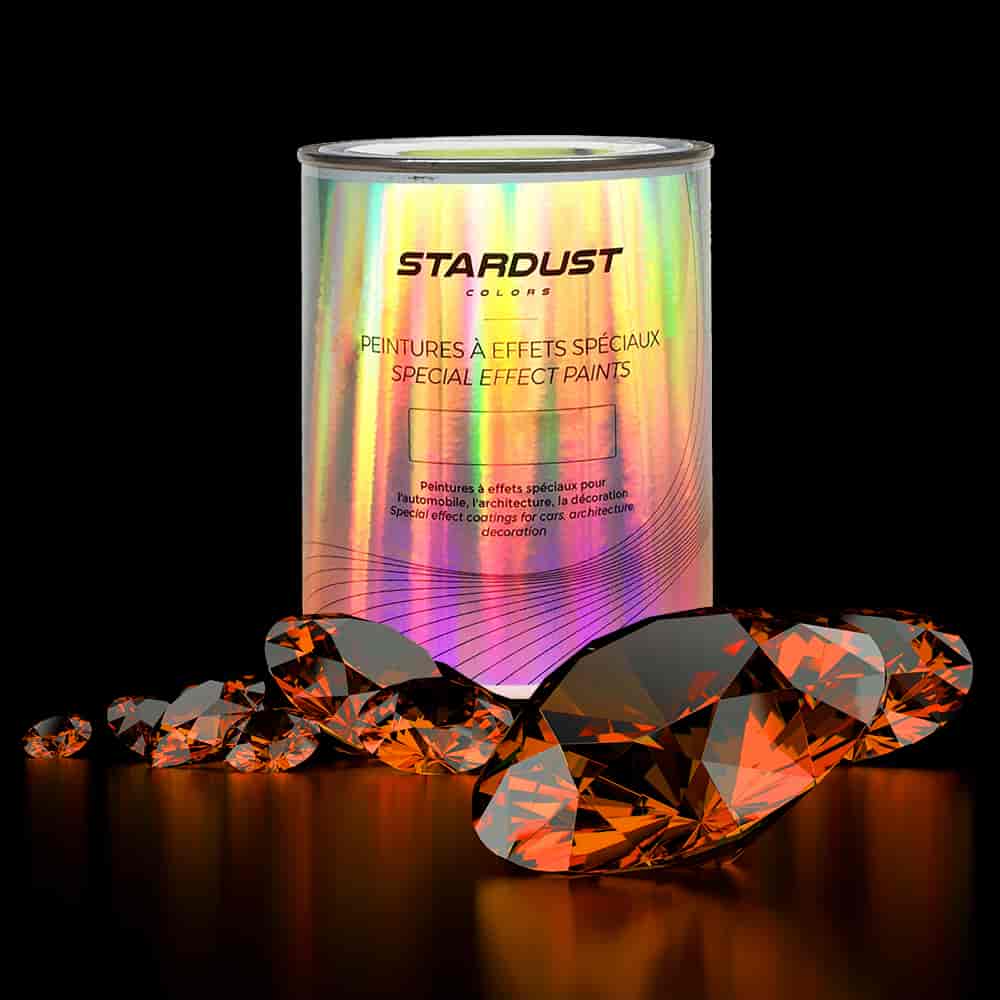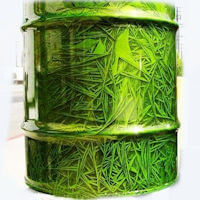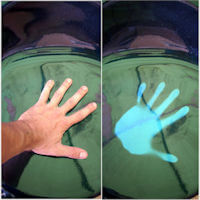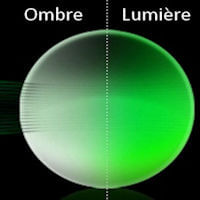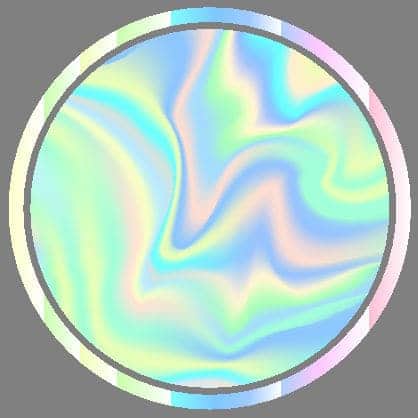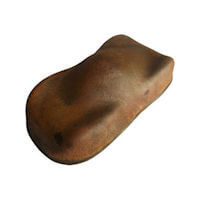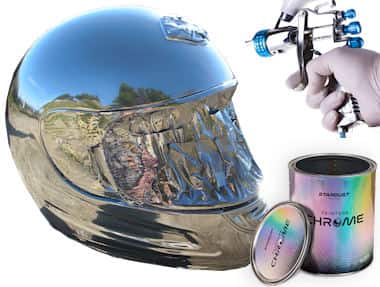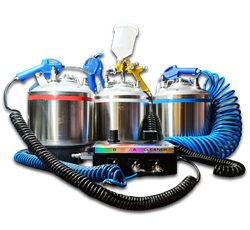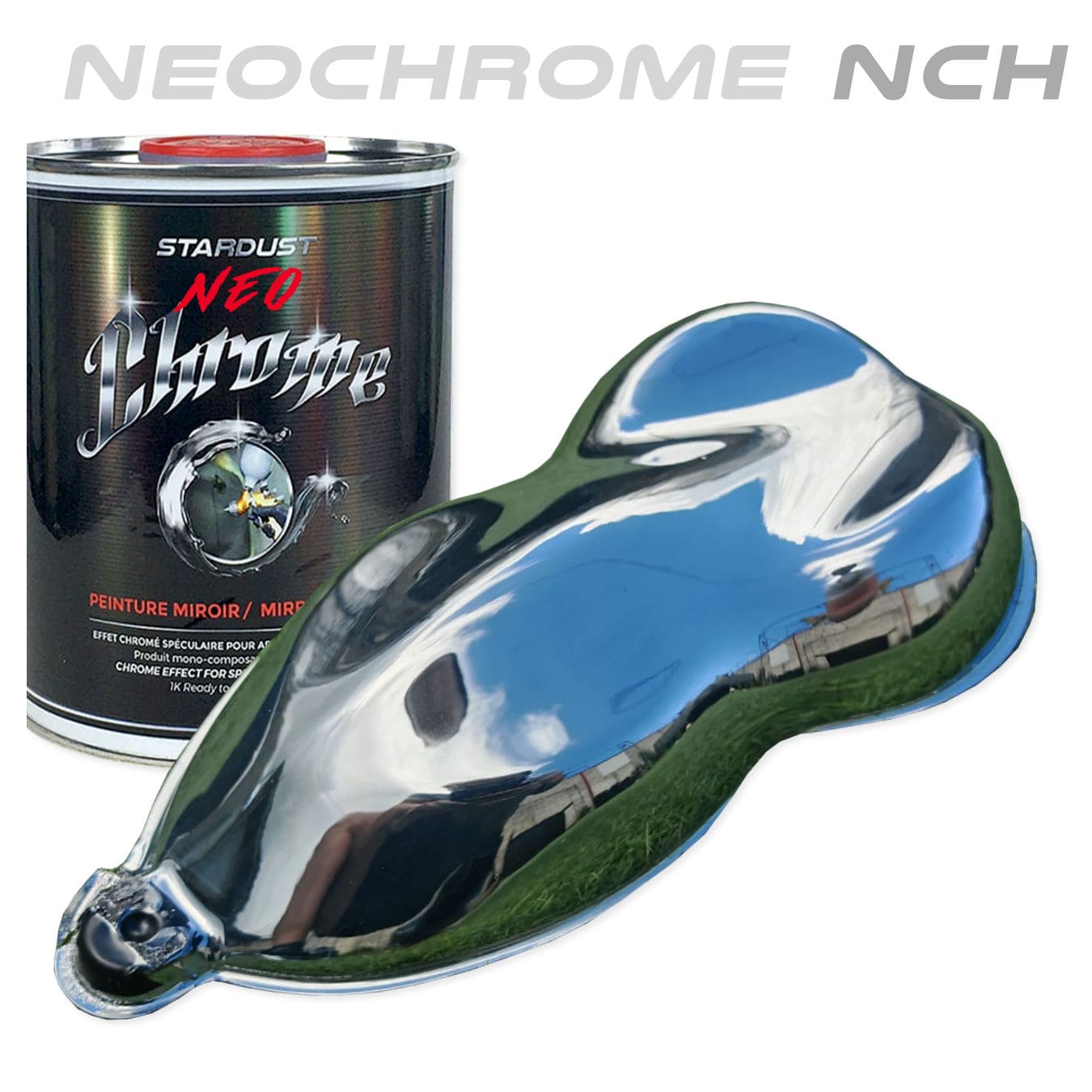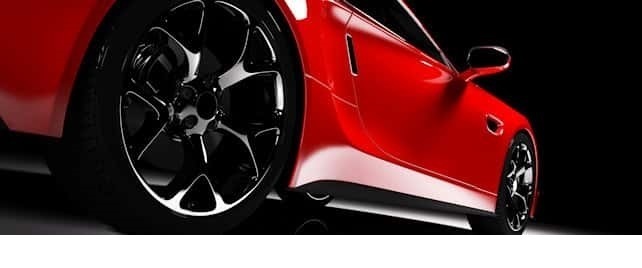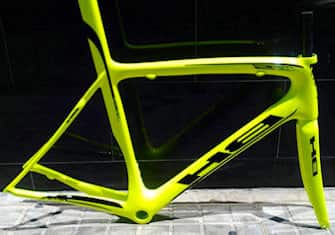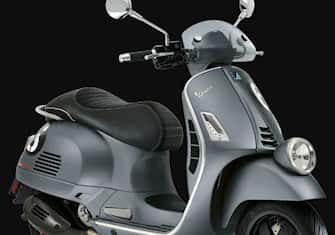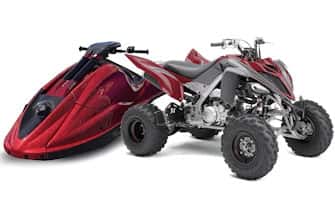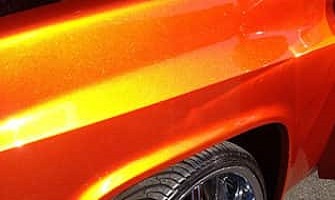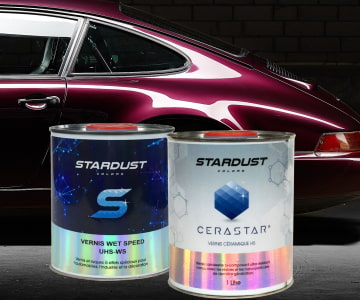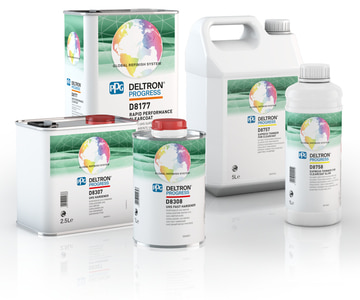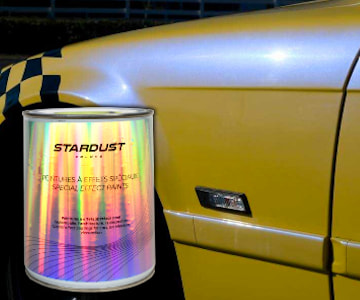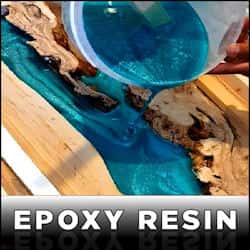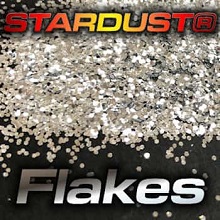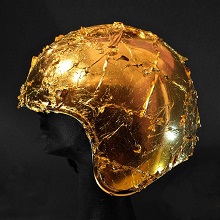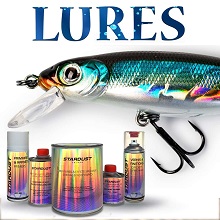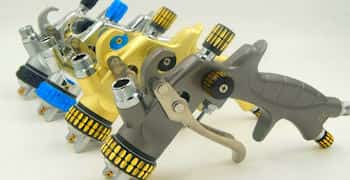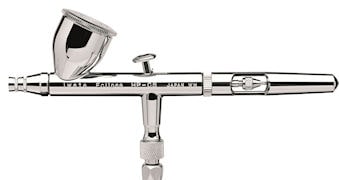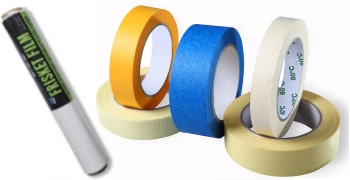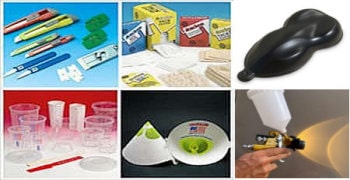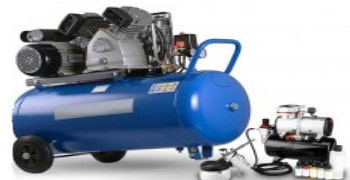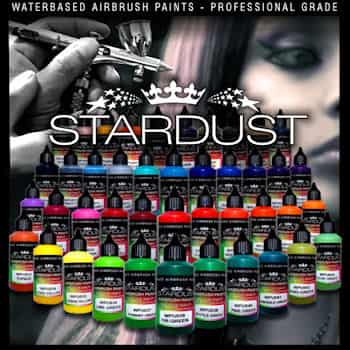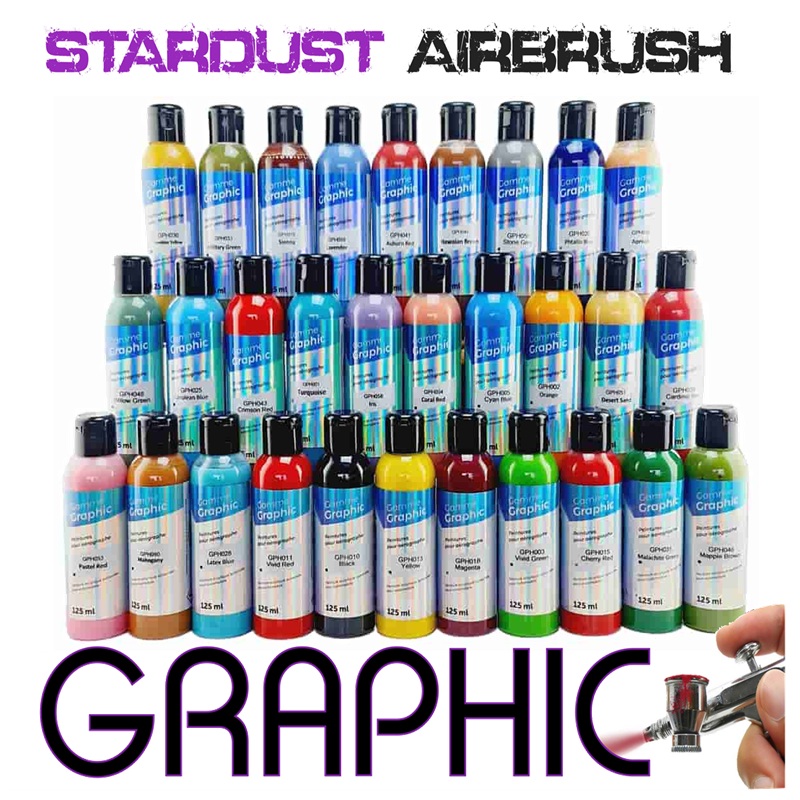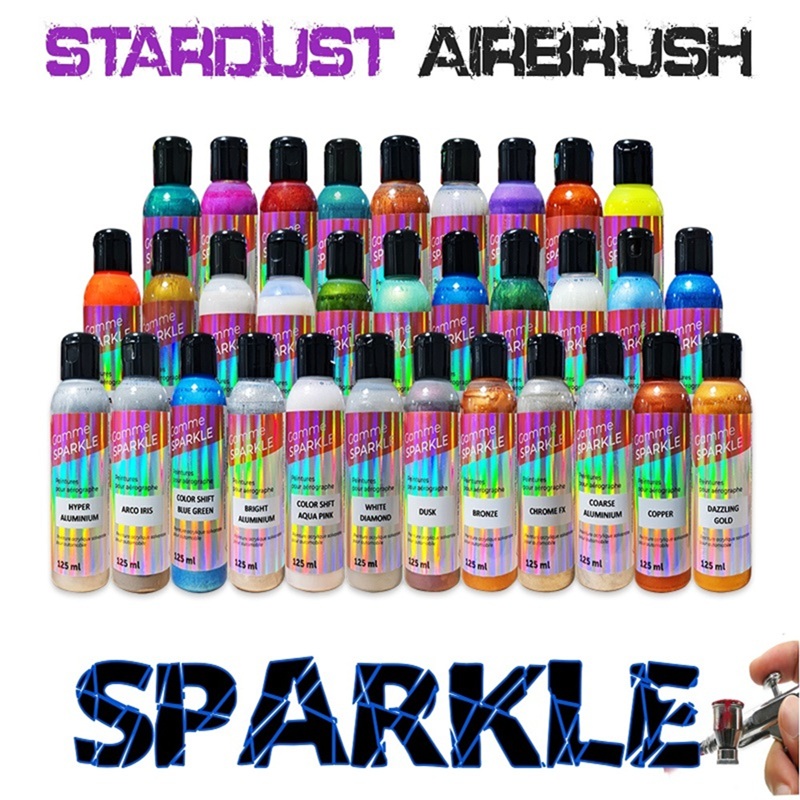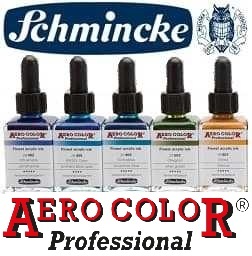To paint a touch-up or your entire motorcycle, you will need a few products and consumables. To order SACHS paint using the colour codes of European motorcycles, including the SACHS motorcycle codes, you must first have this reference corresponding to your motorcycle’s paint.
Go to the product page titled "SACHS base coat paint", take the time to read and understand all instructions, and select the quantity of paint you need from the drop-down menu. You can then send us your SACHS colour code by email, once the order is placed, at orders@stardustcolors.com.
To paint the motorcycle, a topcoat is essential. This clearcoat is applied immediately after the basecoat and provides gloss, shine, and also resistance to rain, scratches, and chemicals. You’ll find this clearcoat at the bottom of the product page. It is a bodywork clearcoat and must always be a 2K product. We offer a wide range of topcoats, including two-component aerosol versions.
During the preparation phase prior to painting, it is often necessary to apply a primer. This primer helps create a perfectly smooth surface and provides a solid background colour. It’s especially important to have a uniform background shade to avoid tone or shade variation, particularly with pearlescent paints which are somewhat transparent.
Each manufacturer shade may have specific requirements, including the need for a particular primer colour. This could be grey, black, or even white – all available in our range of primers. In rarer cases, a specific undercoat is required. This applies to around 10% of colours, especially “tri-coat” systems.
Our colour department is available for any enquiries, including validation and verification of your paint references (colors@stardustcolors.com).
SACHS brand motorcycle colour codes
Bodywork paints are available in either hydro (used by bodyshops) or solvent-based versions (which we offer). Solvent-based paints offer clear advantages: they dry faster, are finer, easier to apply and sand, and have a lifespan estimated to be twice that of water-based paints.
Our professional solvent-based paints are available in cans or aerosols. The minimum quantity for producing a colour is 250 ml. The 400 ml aerosol is slightly cheaper, but note that it only contains around 100 ml of paint – the rest is gas. Canned paints are supplied ready to use. They do not require a hardener, as they are 1K paints. Only from the 1L kit upwards is the paint delivered in two parts: basecoat and thinner.
Our advice for successful painting with SACHS colours is to clearly visualise the different steps involved, which include not only the layers of paint, but also preparation, sanding, and drying time. Step one is surface preparation. We recommend using a filling primer. Once fully dry (around 6 hours at 20°C), sanding must be carried out using 500 grit paper. Do not sand with anything finer than 500 grit, as the paint may not adhere properly. Sanding between 320 and 500 grit is ideal.
The second step involves applying the SACHS colour code. For pearlescent and metallic finishes, apply several very thin coats until the surface is fully covered. It is strongly advised not to let the basecoat dry fully and then sand it. Instead, proceed directly to the topcoat, to take advantage of “wet-on-wet” adhesion.
To finish applying your original SACHS paint, use a gloss topcoat. After mixing the clearcoat and hardener, apply two coats, leaving a 10-minute interval between each.
Ensure good air circulation while working, and control dust, especially during clearcoating. After 24 hours of drying, the topcoat can be polished to remove any imperfections.
The history of the manufacturer SACHS
The history of SACHS began in 1895, at the dawn of the automotive era in Germany. The company was founded by Ernst Sachs, under the name ZF SACHS AG. It initially specialised in metal components for vehicles, such as chassis, driveshafts, and suspensions.
It also manufactured motorcycles and engine parts. One of its divisions, SACHS Motorcycles, focused on producing all kinds of two- and three-wheeled motor vehicles. Even before the company's official founding in 1895, it had already begun making bicycles in 1894. By the turn of the century, the factory employed 70 workers and produced 50 to 70 bicycles daily.
The company registered numerous patents for its innovations in bicycle and motorcycle technology. It faced counterfeiting issues early on, particularly in China. One of its most famous inventions was the ball bearing. Before WWI, SACHS had already filed nearly a hundred patents.
These patents helped boost production and sales significantly, with the workforce reaching nearly 8,000 employees across various sites during the First World War.
The company was fortunate to escape wartime destruction and continued operations throughout and after the war, even opening new factories in the United States. Despite the hyperinflation of the 1920s, SACHS expanded. In the 1930s, it sold some of its factories to reinvest in R&D. Ernst Sachs died in 1932, and his son took over. Around this time, the company started producing motorcycles with 60 cc engines.
During WWII, two-thirds of the SACHS factories were destroyed by bombings. The company survived and, ten years later, released new motorcycles with larger engine capacities, up to 400 or even 600 cc.
Today, SACHS still manufactures various mechanical components, including its signature product: the ball bearing.
Where to find the colour code of your SACHS motorcycle ?
Identifying a motorcycle's paint code is more difficult than for cars or trucks. Paint references are often not shared by dealers, and the chassis or official documents typically do not include colour codes.
If you purchased your motorcycle new from a dealer, you may be able to find the paint reference – either a code or a name – in the original SACHS user manual.
One of the most effective ways to find the code is by doing a search online, especially on forums dedicated to the SACHS brand. A wealth of information is shared there – not always perfectly accurate, but helpful nonetheless.
Our team can assist you, but we cannot find the code for you. What we can do is verify or confirm a code you provide. We can also tell you whether the colour is available for production. Not all SACHS paints are listed in our software, due to various factors.
The iconic colours of SACHS motorcycles
Throughout the history of SACHS motorcycles, many colours have been developed – from solid shades to modern metallic finishes. Dozens of codes are stored in our colour database.
There are no truly iconic shades exclusive to the brand. However, we can provide some examples of SACHS colour codes to give you an idea of how they are formatted, and help you determine whether your reference matches.
As a reminder, manufacturer paint references always consist of two elements: a code and a name. Either of these is sufficient to identify a colour, but having both allows you to double-check and avoid errors.
Triumph motorcycle colour code
Husqvarna motorcycle colour code
Peugeot motorcycle colour code
BMW motorcycle colour code
KTM motorcycle colour code
MBK motorcycle colour code







